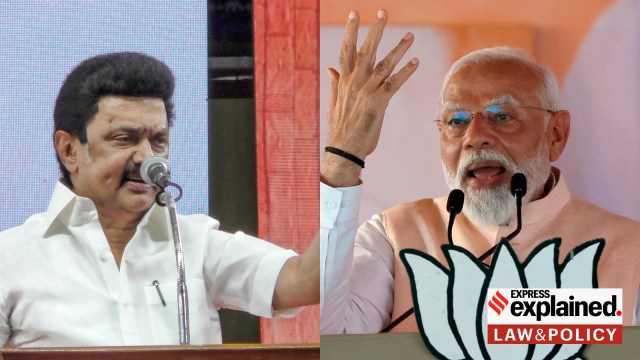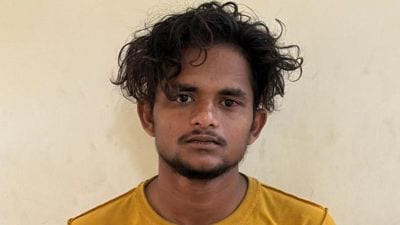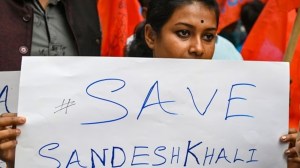- India
- International
Why Tamil Nadu is claiming disaster relief funds from the Centre
Both the states have approached the Supreme Court arguing that the Centre’s inaction violates the Disaster Management Act of 2005. Here is what you need to know.
 This not the first time that M K Stalin's Tamil Nadu government has locked horns with the Narendra Modi-led Centre. (PTI Photos)
This not the first time that M K Stalin's Tamil Nadu government has locked horns with the Narendra Modi-led Centre. (PTI Photos)Tamil Nadu has filed a suit at the Supreme Court claiming that the Centre is withholding national disaster relief funds, after Cyclone Michaung and consequent floods rocked the state in December 2023. Just last month the Karnataka government had also filed a plea with the apex court, claiming that the Centre is denying disaster relief funds that are necessary to aid drought-affected areas in the state.
Funds for disaster relief are available to states from two sources — the State Disaster Relief Fund (SDRF) and the National Disaster Relief Fund (NDRF). These funds were created with the enactment of the Disaster Management Act, 2005 (DMA), following the devastating tsunami of December 2004.
Currently, both Karnataka and Tamil Nadu are seeking additional funds from the NDRF, and are arguing that the Centre’s inaction violates the DMA, and guidelines issued under it.
Here is what you need to know.
How are funds released to states from the NDRF?
As per January 2022 Operational Guidelines for Constitution and Administration of the National Disaster Response Fund (NDRF Guidelines), Rs 54,770 crores has been earmarked for the NDRF, from the fiscal year 2021-22 until 2025-26. The NDRF covers calamities such as cyclones, droughts and floods that are “considered to be of severe nature by the Government of India”, and which require additional funding beyond what is available in the SDRF.
A state that does not have adequate funds in the SDRF and has faced a national calamity “beyond the coping capacity of the State Government” can submit a request for funds from the NDRF. Depending on the nature of the calamity, either the Ministry of Home Affairs (MHA) or the Ministry of Agriculture will decide if there is a case for additional assistance from the NDRF.
NDRF Guidelines provide a step-by-step process for this assessment.

First, the MHA will immediately constitute an Inter Ministerial Central Team (IMCT) to visit the areas affected by the calamity, and determine if there is a need for additional funds. Then, the IMCT will submit its recommendation to a sub-committee of the National Executive Committee (comprising the secretaries of relevant central ministries) which will decide how much funding can be made available.
Finally, a high level committee chaired by the Home Minister, and comprising the Ministers for Agriculture and Finance, as well as the NITI Aayog vice-chairman, will sign off on the release of NDRF funds.
Why did Tamil Nadu and Karnataka approach the Supreme Court?
Tamil Nadu has asked the apex court to direct the Centre to pay Rs 37,902 crores in aid for the damage caused by Cyclone Michaung. It is also seeking Rs 2,000 crore as an interim measure for relief operations.
The state government claims that despite completing all the necessary steps on its part, and both the IMCT, and the sub-committee of the National Executive Committee having submitted their recommendations to the high level committee, the MHA is still to convene a meeting and release the funds.
Claiming unfair treatment in comparison to other states, Tamil Nadu is arguing that the Centre has violated the citizens’ rights to equality, and life with dignity (Articles 14 and 21 of the Constitution).
Notably, Tamil Nadu’s suit was filed shortly after Karnataka’s filed its own petition on March 23, seeking the release of Rs 18,171 crores in funds from the NDRF. The state claims that 196 of the 236 taluks in the state have been classified as “severely drought affected” in 2023, with another 27 classified as “moderately drought affected”.
Karnataka too claims that the IMCT conducted a comprehensive assessment of the drought situation in the state in October 2023, and that the sub-committee of the National Executive Committee had recommended financial assistance for the state to the MHA in November 2023.
In addition to claims that the Centre’s delay of over six months in releasing NDRF funds violates the right to life with dignity, the state of Karnataka has referred to the ‘Manual For Drought Management’ (updated in 2020) that was released by the Ministry of Agriculture. It states “The Central Government will take a final decision on the assistance to the State from the NDRF within a month of the receipt of the IMCT Report.”
Have other opposition-ruled states filed pleas against the Centre at the Supreme Court?
This is just the latest tussle between the Centre and opposition-ruled states.
The Kerala government approached the Supreme Court in March claiming that President Droupadi Murmu refused to give assent to four bills “while disclosing no reason whatsoever”. This was after Governor Arif Mohammed Khan had withheld assent on seven bills passed by the state legislature — some pending for as long as two years — before referring them to the President instead of giving assent, or requesting reconsideration.
Other opposition ruled states, including Tamil Nadu, Telangana, and Punjab have also approached the court in the last year claiming Governors have been withholding assent to bills indefinitely.
In a separate budgetary matter, Kerala has also approached the Supreme Court claiming that the Centre has slashed the states’ borrowing power in the midst of a financial crisis.
More Explained
EXPRESS OPINION
Apr 04: Latest News
- 01
- 02
- 03
- 04
- 05































